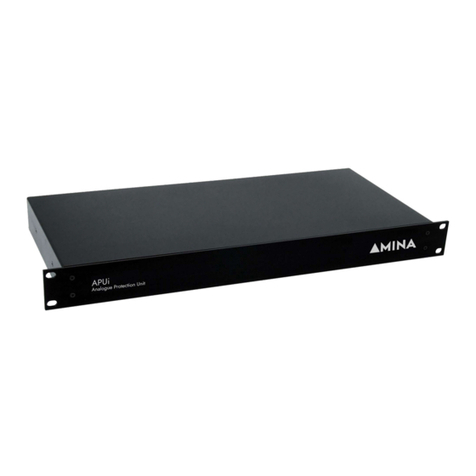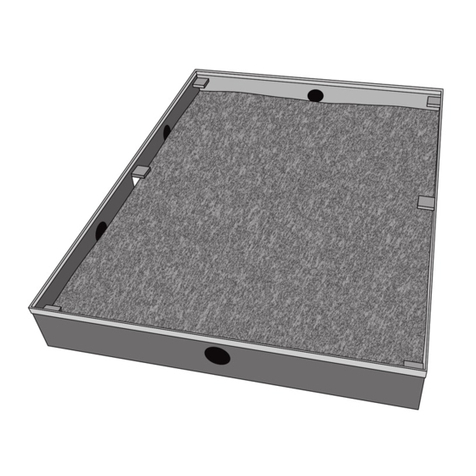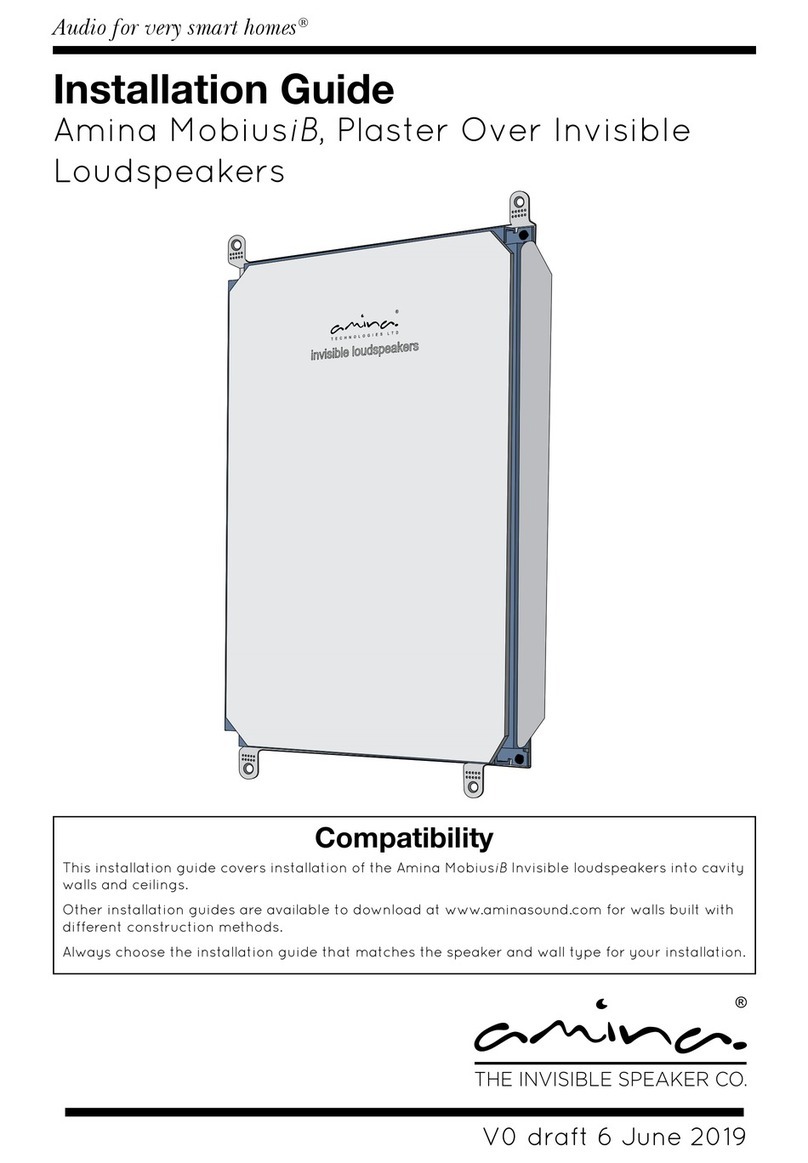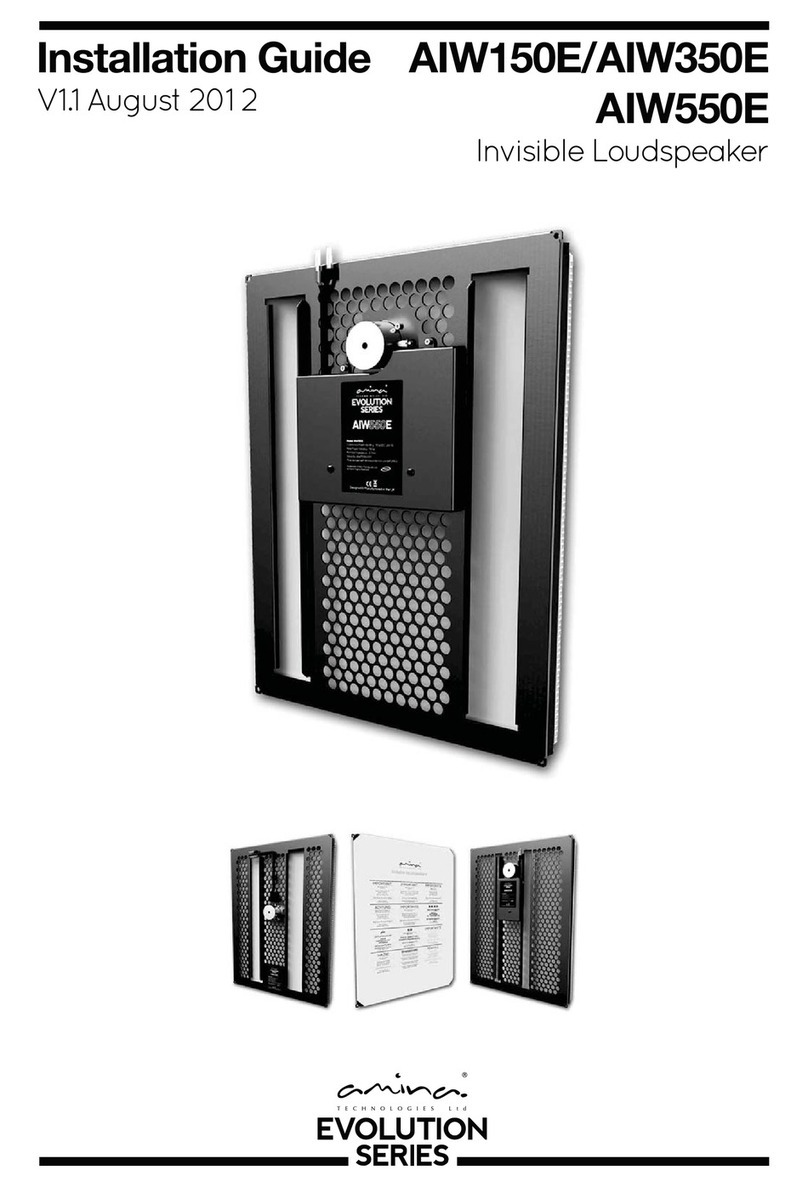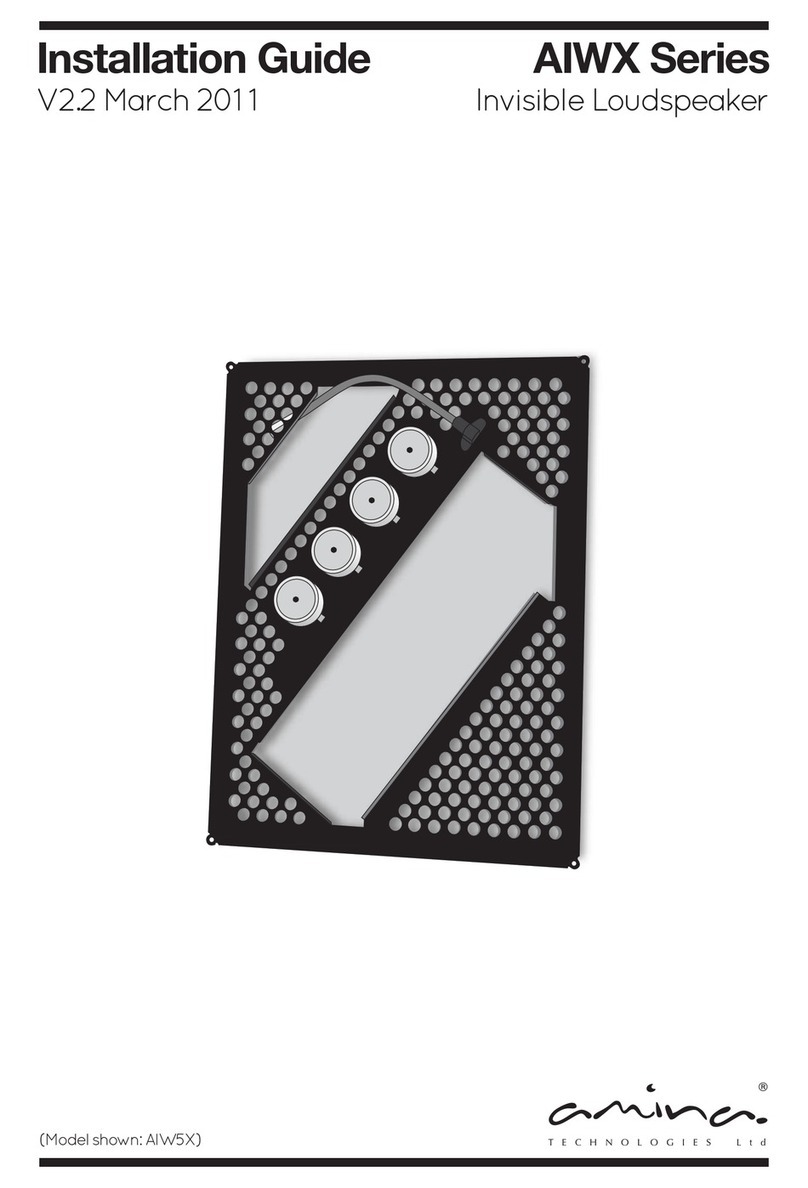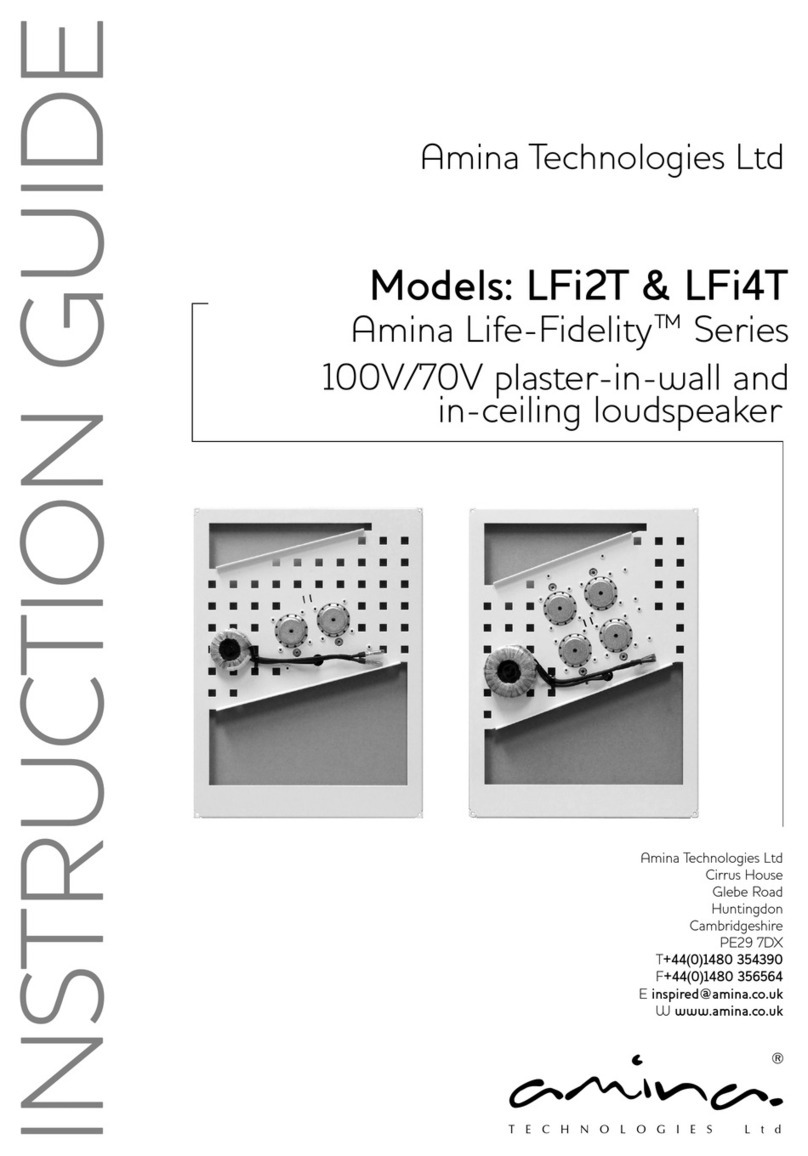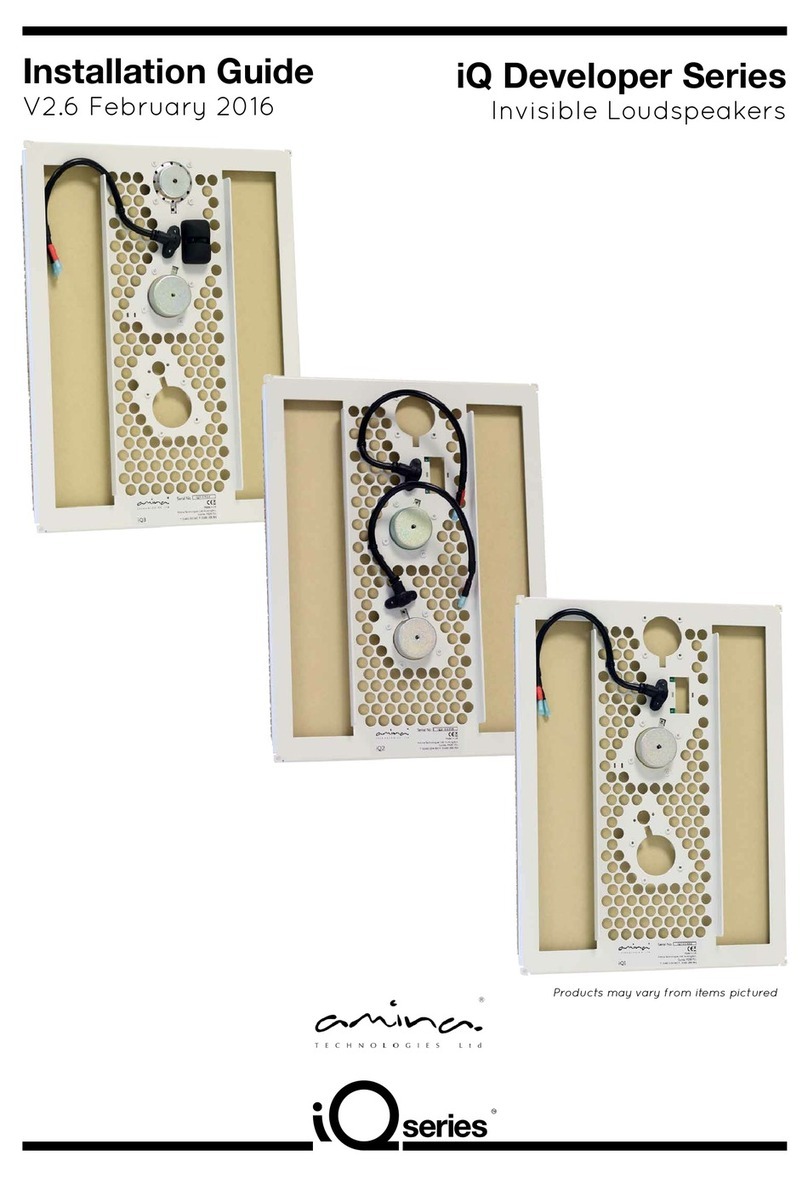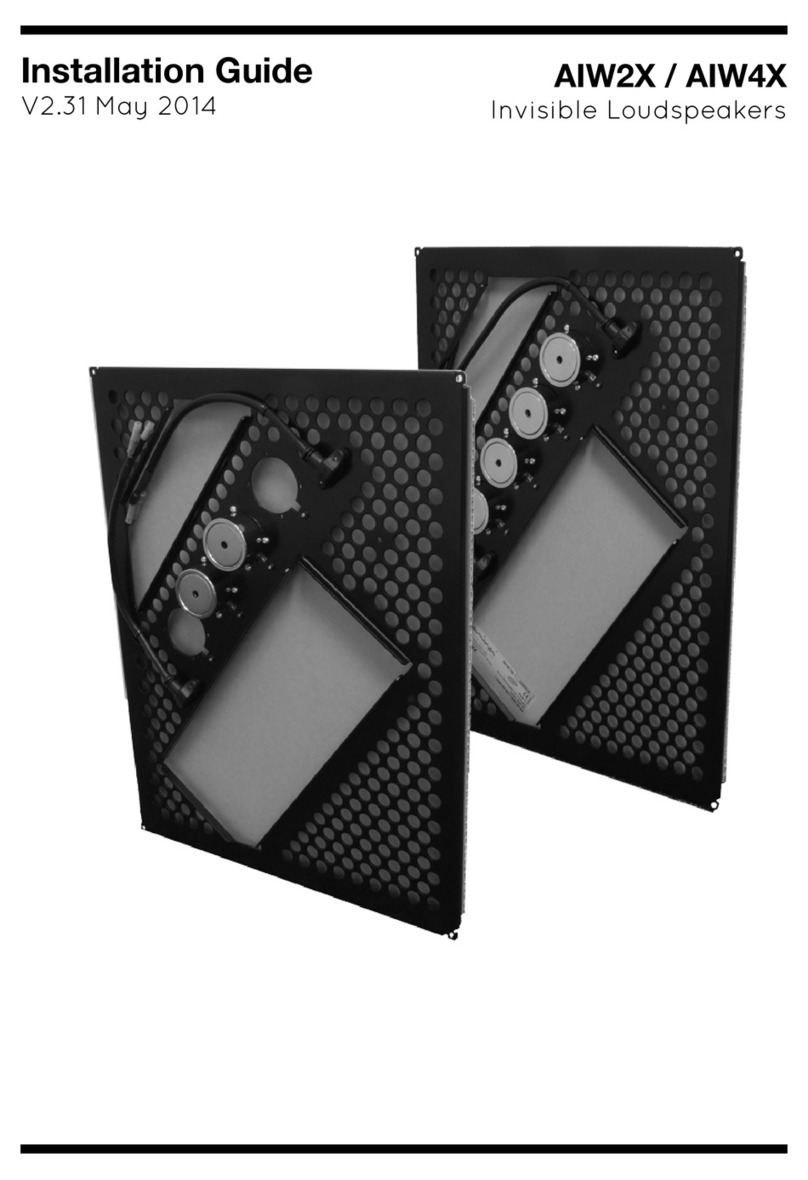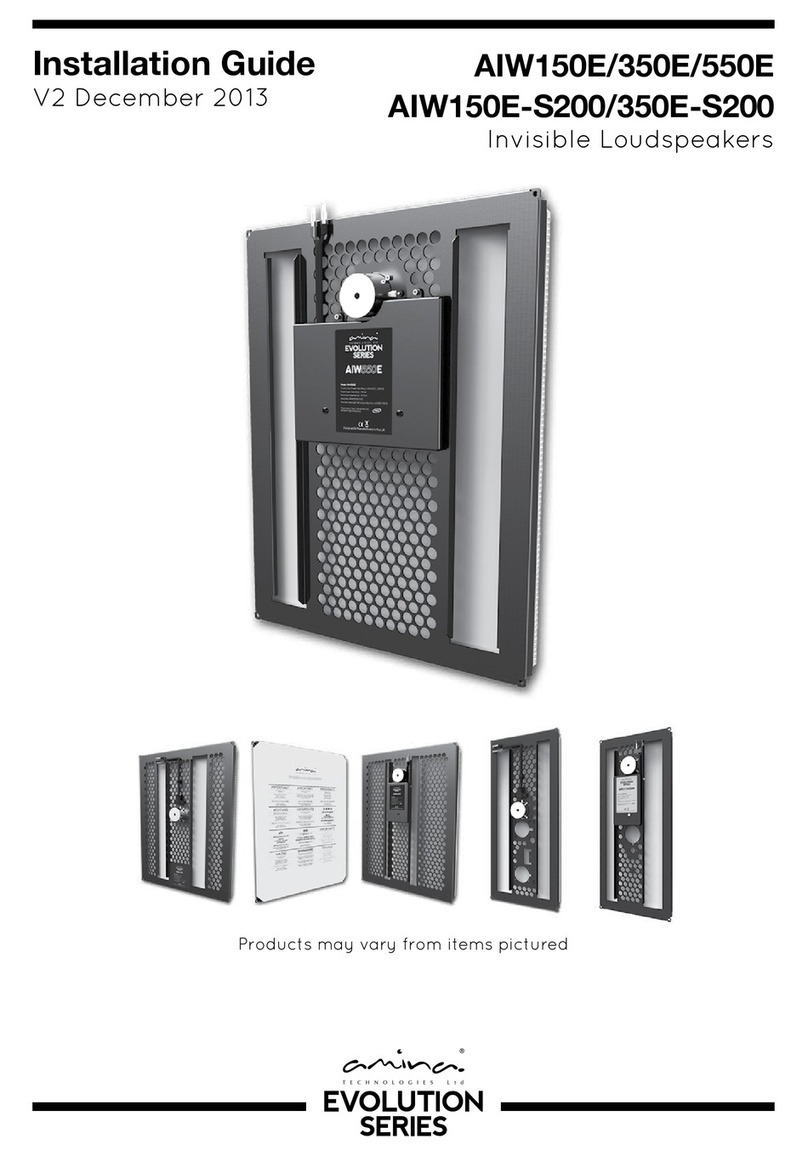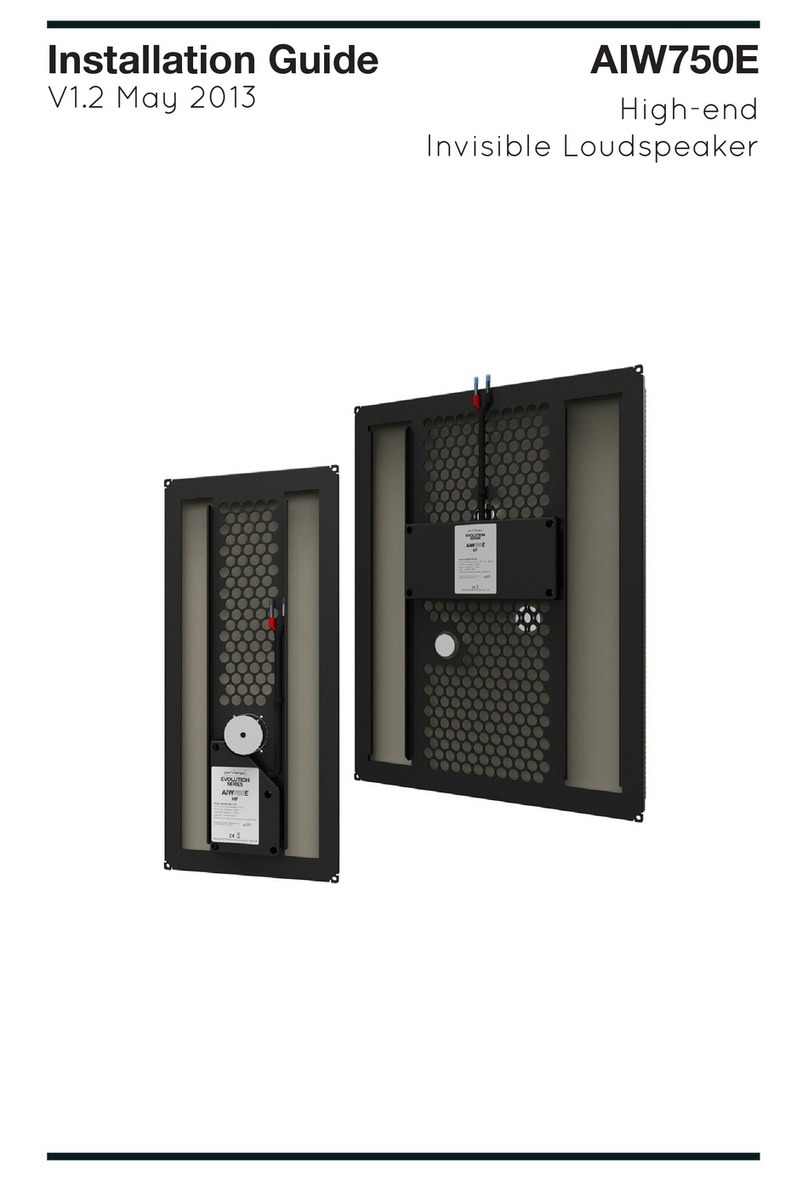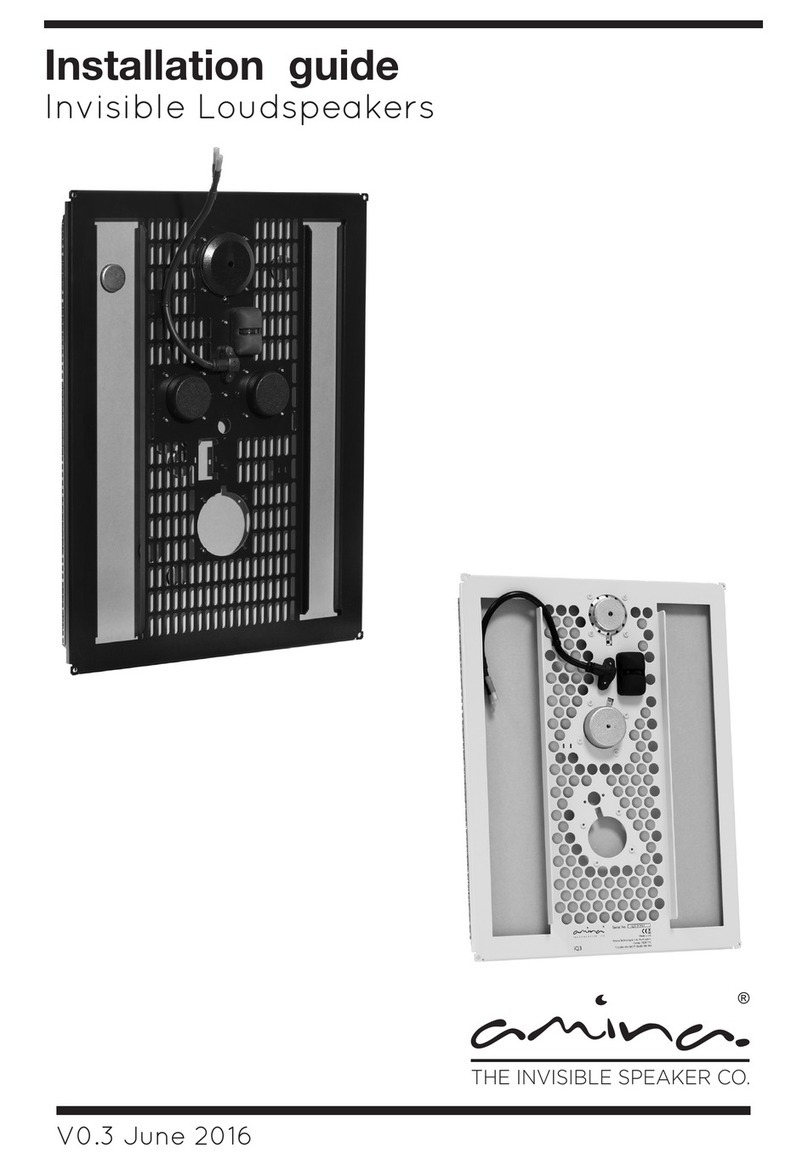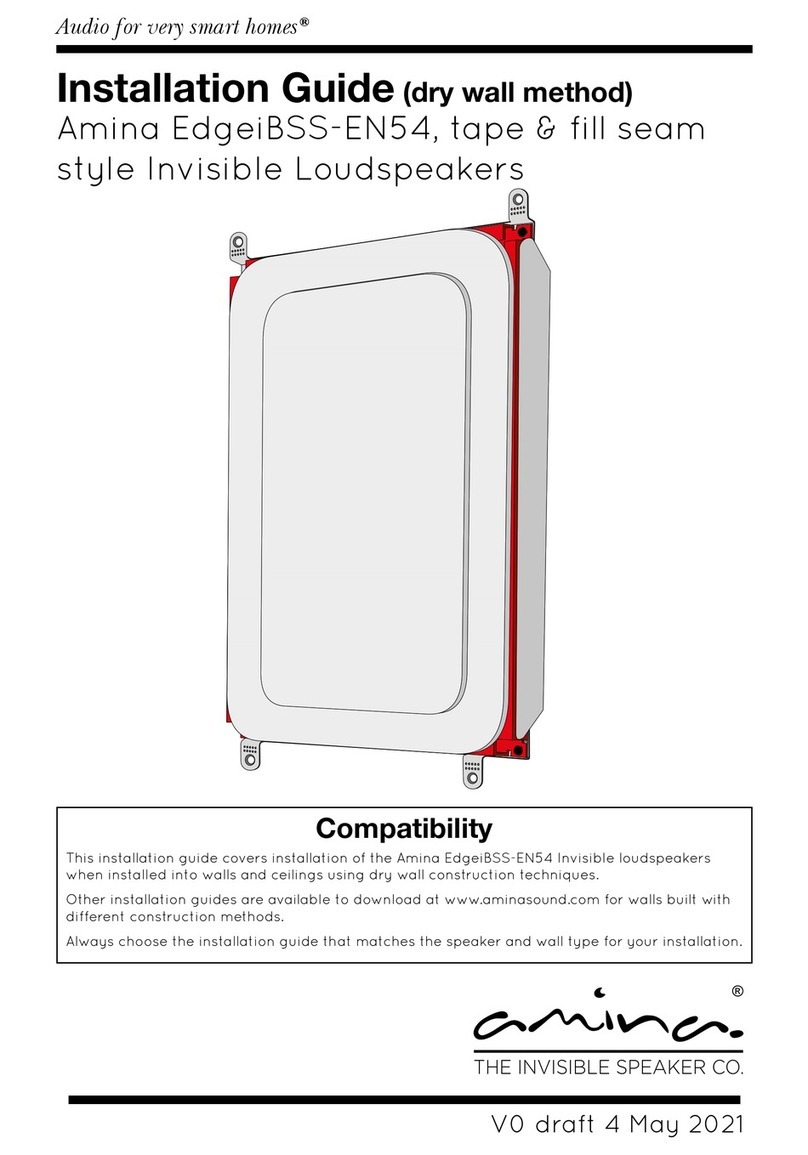Ensure that all installation mounting surfaces
are able to support the weight of the product.
After installation, avoid pushing on the wall
or ceiling surface immediately in front of the
speaker. Excessive excursion, whilst unlikely to
damage the speaker, will undoubtedly crack
the plaster around its perimeter.
Do not attempt to modify or repair the product.
Contact your distributor or manufacturer if a
fault should occur.
The rear of the product should not be subject
to chemical cleaning and should not be painted
in any way.
When plastering over, ensure only 2mm of
material covers the product. More than this will
degrade the performance of the product and
could lead to product failure.
To ensure optimal performance, please read
this guide carefully and keep in a safe place
for future reference.
Install this product in a cool, dry, clean place
- away from direct sunlight and heat sources,
strong vibrational forces, chemical fumes,
dust and moisture (steam).
Do not expose this product to sudden
temperature changes or locate it in an
environment with high humidity. This is to
prevent condensation forming inside which
may cause damage to the product.
Do not clean this product with chemical
solvents as this may damage the finish. Use a
clean, dry or damp cloth.
Caution: Read before installing this product
>
>
>
>
>
>
>
>
>
ENVIRONMENTAL:
Before installing, ensure that the building is environmentally sealed, de-humidified and at a stable
temperature of at least 16 degrees centigrade (61 degrees Fahrenheit)
Never force dry the environment after installing speakers. Force drying should onl y be used to
ensure the entire environment and structural work is fully dry before installation of invisible
loudspeakers.
This product should not be used with single thick coat plaster solutions or with other finishing
methods that take days (rather than hours) to dry out.
Only use low shrinkage plaster types to skim coat these loudspeakers. Consult your plaster
supplier for advice.
Excessive moisture can damage the product. For expert advice contact your dealer or Amina
Technologies Ltd.
Please be aware that when this product is directl y fitted into a solid wall structure (e.g. when
using the solid wall backbox) vibrational energy is inevitabl y transferred into the solid wall
structure. This energy can travel for some considerable distance up, down and along the structure.
It is therefore recommended the product be fitted within acoustically insulated stud walls or
ceiling sections where possible. The use of the product directly embedded in solid walls is not
recommended in multi occupancy buildings.
Equally, using the product in simple (stud or rafter with plasterboard or floor board directly
attached on both sides) stud walls & wooden rafter ceiling/floor structures will also transfer
substantial sound energy to the other side of the wall or floor above. It is therefore recommended
that the product be fitted in acoustically isolated stud walls or ceiling sections where possible.
Completed and fully dried plaster surfaces should be finished with permeable coatings / materials
to allow moisture in that coating or the adhesives used to apply those materials, to dry into the
environment quickly.
